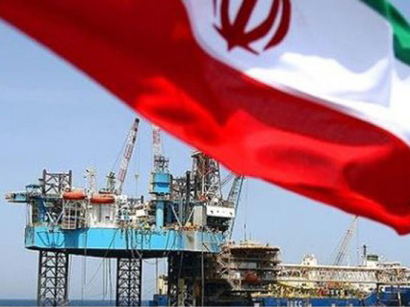Tehran, Iran, Jul. 23
By Milad Fashtami - Trend:
The U.S. Energy Information Administration (EIA) in its annual report about Iran's energy sector released on July 22 said that the country's primary energy consumption has grown by more than 50 percent over the past 10 years.
Iran is the second-largest oil-consuming country in the Middle East, second to Saudi Arabia.
The report reads that, Iranian domestic oil consumption is mainly diesel, gasoline, and fuel oil. Total oil consumption averaged approximately 1.75 million barrels per day in 2013, almost 3 percent higher than the year before.
In the past, Iran had limited domestic oil refining capacity and was heavily dependent on imports of refined products, especially gasoline, to meet the domestic demand. In response to international sanctions and the resulting difficulty in purchasing refined products, Iran expanded its domestic refining capacity.
As of September 2013, Iran's total crude oil distillation capacity was nearly 2.0 million barrels per day, about 140,000 barrels per day more than the previous year, according to FGE.
According to EIA, most of that increase came from expansion projects that were recently completed at the Arak and Lavan refineries. Iran also extracts petroleum products at natural gas processing plants (naphtha and liquefied petroleum gas). A small amount of crude oil, approximately 4,000 barrels per day, is directly burned for power generation.
Almost all of Iran's product consumption was locally produced. In 2013, FGE estimates that Iran imported almost 17,000 barrels per day of petroleum products, of which roughly 85 percent was gasoline.
Over the past several years, Iran's gasoline import dependence has decreased significantly as a result of increased domestic refining capacity and subsidy cuts. Iran plans to increase gasoline production capacity at the Isfahan and Bandar Abbas refineries by the end of 2014.
Despite refinery expansions, FGE expects Iran's gasoline imports to increase over the medium and long term because of increased gasoline demand and the government's plan to reduce gasoline production at petrochemical plants. However, gasoline demand is expected to decrease in the short term because of higher prices as a result of subsidy cuts.
Iran consumed 9.6 quadrillion British thermal units (Btu) of energy in 2012. Natural gas and oil accounted for almost all (98%) of Iran's total primary energy consumption in 2012, with marginal contributions from coal, hydropower, nuclear, and non-hydro renewables.
In order to curtail wasteful energy use and to limit domestic demand growth, Iran has embarked on an energy subsidy reform to raise the prices of domestic petroleum, natural gas, and electricity. The first phase of the reform was enacted in late 2010, and phase two was initiated in early 2014.
IEA says that in 2013, Iran produced approximately 3.2 million barrels per day of petroleum and other liquids (total oil), of which roughly 2.7 million bpd was crude oil, 0.4 million bpd was condensate, and 0.1 million bpd was natural gas plant liquids (NGPL).
Iran's total oil production level in 2013 was 1.0 million bpd (almost 25%) lower than the production level of 4.2 million bpd in 2011.
According to the Oil & Gas Journal, as of January 2014, Iran has an estimated 157 billion barrels of proved crude oil reserves, representing nearly 10% of the world's crude oil reserves and 13% of reserves held by the Organization of the Petroleum Exporting Countries (OPEC).
About 70% of Iran's crude oil reserves are located onshore, with the remainder mostly located offshore in the Persian Gulf.
Iran also has proved and probable oil reserves of approximately 500 million barrels mostly offshore in the Caspian Sea, but exploration and development of these reserves have been at a standstill because of territorial disputes with neighboring Azerbaijan and Turkmenistan.
Iran also shares a number of both onshore and offshore fields with neighboring countries, including Iraq, Qatar, Kuwait, and Saudi Arabia.
Most of Iran's reserves were discovered decades ago. According to a report by Clyde & Company, roughly 80% of Iran's reserves were discovered before 1965.






